#LBJ Library
Explore tagged Tumblr posts
Text

"My name is Lyndon Baines Johnson! I'm your goddamn President and I'm here to tell you my office and the people of the United States are behind you!"
-- President Lyndon B. Johnson, shouting to evacuated citizens as he walked through a shelter in New Orleans with a flashlight following Hurricane Betsy, September 1965.
#History#Presidents#Lyndon B. Johnson#LBJ#President Johnson#Johnson Administration#LBJ Library#Lyndon Johnson#Hurricane Betsy#New Orleans#Presidential Quotes#Quotes by Presidents#Presidency#Presidential History#Presidential Leadership
129 notes
·
View notes
Text
Day 350: "Jake Andrews gives a guinea pig a hug"

link
–This image is part of the public domain, meaning you can do anything you want with it! (you could even sell it as a shirt, poster or whatever, no need to credit it!)–
#public domain#art#copyright#free art#open source#flickr#flickblr#photography#creative commons#no copyright#guinea pig#lbj library#partnership for children#nikon d800#195.0 mm#animals#animal#animal friends#cute animals
8 notes
·
View notes
Text
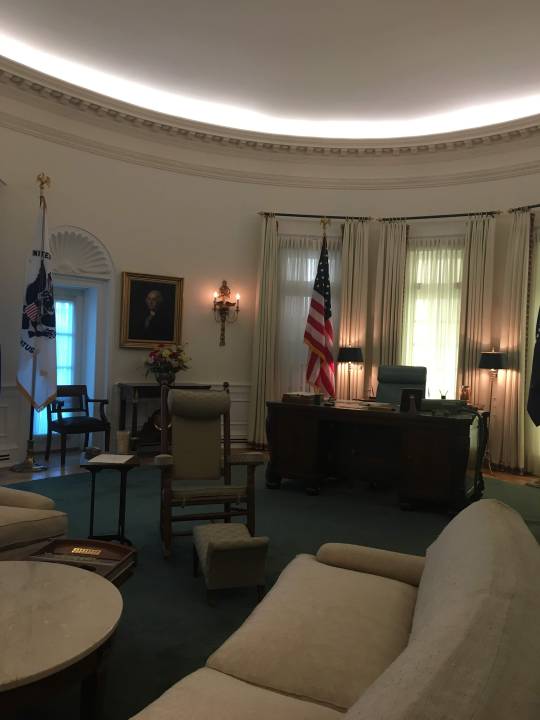



Lyndon Baines Johnson Library and Museum
Lyndon B. Johnson Presidential Library and Museum
LBJ Library: LBJ Presidential Library
Located in the LBJ School of Public Affairs Campus. Visited 27 August 2018.



More pictures from the LBJ School of Public Affairs Campus, including the LLILAS Benson Latin American Studies and Collections. Visited January 9 2020.
#Lyndon Baines Johnson Library and Museum#Lyndon B. Johnson Presidential Library and Museum#LBJ Library#LBJ Presidential Library#LBJ School of Public Affairs#LLILAS Benson Latin American Studies and Collections#LBJ Fountain#University of Texas at Austin#UT Austin#University of Texas System#Austin#Texas
0 notes
Text
youtube
I recently came upon recordings of the 1972 Civil Rights Summit which included a good friend of mine, the late Dr. Melvin P. Sikes. The recordings are posted as a group on the YouTube channel of the LBJ Library. What a marvelous event!
Ten years later, I would go to work for Mel in the College of Education at UT while I was attending graduate school. We became fast friends. I helped Mel transition to Professor Emeritus. A link to a book he co-authored is below. It is an excellent discussion and recommended.
0 notes
Text

Lyndon Baines Johnson Library postcard.
54 notes
·
View notes
Text
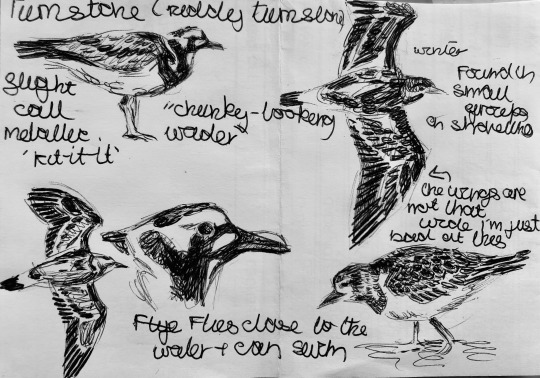
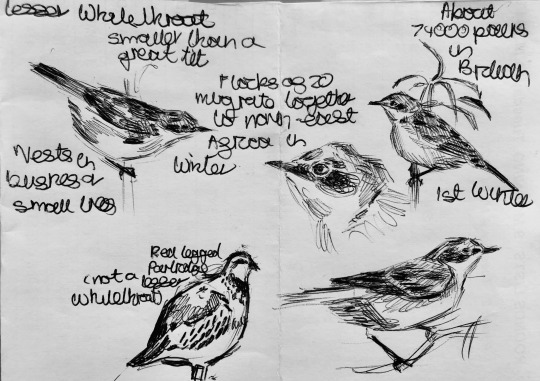

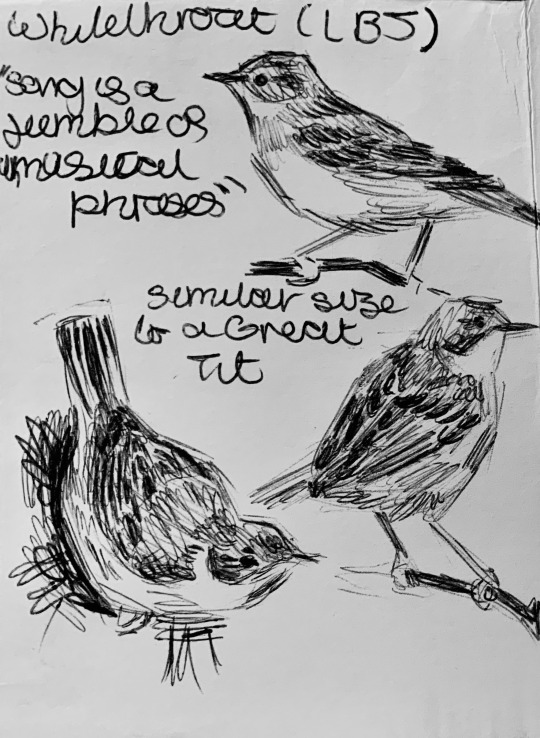
I come baring a bonus bundle of birds
( the artists behind the book I used as reference are Hilary Burn, Martin Elliot, Alan Harris, Peter Hayman, Stephen Message, Laurel Tucker and Dan Zetterström)
#Please note when I say LBJ I am referring to little brown jobs (small brown birds that are difficult to distinguish)#And not the American President#Also I had to return the bird book to the library so this may be the end of the bird saga for now#Also also I’m a bit busy with exams#Sooooo disappearing from the internet probability is high#my art#artwork#traditional art#bird art#Bird#black tailed godwit#Whitethroat#Turnstone#Red legged partridge
30 notes
·
View notes
Text

tysm to the lovely @stringcage for pointing out that jinx's shadow is vi! so i have two sorta theories on this that i wanna share ♡
vi is going to feel obligated to follow jinx in her path of destruction because she feels responsible for jinx and who she has become. the shadow representing how vi is not acting in her own interest rather following jinx
the shadow is to show how vi is now forever in jinx's past as jinx has gone so far and has turned full villain mode that vi no longer sees her as her sister powder and has accepted they are enemies
obviously which ever way it goes it will be way more nuanced but omg i have not stopped thinking about this 12 second clip and had to get my thoughts out there!!
62 notes
·
View notes
Text
‘A Revolution Waiting To Happen’: The Surprising Alliance Between Stewardesses and Gloria Steinem
When Flight Attendants and the Most Famous Feminist of Her Time Joined Forces
— February 13, 2024 | Kirstin Butler

Art By Tania Castro-Daunais. Source Images From Wikimedia, NYU Tamiment Library, Kathleen Heenan.
When the first widely-circulated issue of the pioneering feminist magazine, Ms., hit newsstands in July 1972, it contained a small advertisement toward the back that most readers likely disregarded. That unobtrusive listing contained big news for its intended audience: flight attendants, or stewardesses, as they were then known. The ad announced an upcoming meeting to discuss forming a group focused on gaining workplace equality and respect for their profession. Stewardesses for Women’s Rights was born later that year.
SFWR’s founders were both former Eastern Airlines flight attendants. Jan Fulsom had quit her job after a drunk passenger tore her skirt off mid-flight, and the pilot, her immediate supervisor, laughed. Sandra Jarrell was fired by Eastern for being what its requirements considered overweight. (Nearly all airlines at the time required their flight attendants be weighed regularly; attendants who exceeded a carrier’s arbitrarily set limit, were put on probation or fired altogether.) Jarrell and Fulsom had had enough of airlines’ predatory and demeaning workplace culture, and knew other flight attendants felt the same.
At that first SFWR meeting in a church basement in Greenwich Village, women shared experiences and began to formulate goals and strategy. The flight attendants wanted to improve their working conditions, advocate for health and safety measures for passengers and crew, and, most vehemently, counter chauvinistic public perception of stewardesses.
SFWR found common cause in a surprising, high-profile ally. Ms. founder Gloria Steinem had come to know flight attendants while shuttling back and forth between the magazine’s headquarters in New York and the National Women’s Political Caucus in Washington, D.C. “I was such a frequent-flying oddity among the mostly male passengers going to our nation’s capital, but we seemed to share a sense of being outsiders,” Steinem would later write in her 2015 memoir, My Life on the Road. She began to spend time in airplane galleys on longer trips, in what became “a lifetime of finding girlfriends in the sky.” Steinem was at SFWR’s inaugural meeting, providing guidance and encouragement. “I’d been flying so much and listening to so many [flight attendants],” she later recalled, “that I had to resist saying ‘we’ when I talked about job problems.”

Gloria Steinem at a women's conference held at the LBJ Presidential Library on November 9, 1975. Frank Wolfe, LBJ Library.
The alliance disconcerted some activists, who took at face value the derogatory portrayal of flight attendants in popular culture. For years, airline marketing had dealt in a range of fictional stewardess archetypes, from wife-in-training to sexpot. “Other feminists find it a little hard to take flight attendants seriously because of their image,” historian Kathleen Barry told American Experience. “Members of Stewardesses for Women’s Rights recalled being hissed at at a feminist convention they attended. They get a mixed response from feminists generally. So when somebody like Gloria Steinem supports what they’re doing, that's hugely important.”
SFWR’s members moved quickly after that first meeting, putting together a press conference in December 1972. As reporters took notes, they called out ad campaigns with blatantly suggestive taglines—such as “She’ll Serve You - All the Way” and National Airlines’ high-profile “Fly Me” campaign —as well as taking on the broader misrepresentation of flight attendants in books and films like How to Make a Good Airline Stewardess and “Swinging Stewardesses.” (The former contained illustrations of dozens of flight attendants both in uniform and completely naked.) Such “annoying and degrading” treatment, SFWR told the assembled media, amounted to “making a dollar by slandering us.”
Word spread further after a feature piece on SFWR appeared in the January 1973 issue of Ms. The group held the first of several national conferences in March in New York City. Steinem spoke; joined by prominent feminist attorney Betty Southard Murphy, who also provided SFWR with pro bono legal counsel; Margaret Sloan-Hunter, founder of the National Black Feminist Organization; and Kathie Sarachild, a radical feminist activist. SFWR founder Sandra Jarrell gave the keynote speech, addressing the fraught topic of unions, none of whose officers were in attendance. While many stewardesses were members, union leadership was nearly always male and older, and often unsympathetic to the particular issues around flight attendants’ working conditions. “Unfortunately,” Jarrell noted, “unions do not have the reputation of representing the interests of women at the bargaining table.”
Conference attendees were presented with the new SFWR logo, the gender symbol for female with wings extending out to the right, mimicking the wing pins that flight attendants received from their airlines. The new design dominated the first page of the inaugural issue of SFWR’s monthly newsletter, which talked about finding the best way to “fight sexism in the skies.” (Proving Jarrell’s point about the lack of union support, officials of the Transport Workers Union prohibited SFWR from distributing the newsletter via flight attendants’ airport mailboxes.)
Over the next several years SFWR grew to include 13 local chapters, and refined its methods for addressing flight attendants’ work and public image. At an individual level, members helped file discrimination complaints with the Equal Employment Opportunity Commission and the Civil Aeronautics Board, as well as lawsuits against airlines. SFWR also took on another topic with far-reaching impact, focusing on a topic germane both to their profession and the greater public: hazardous cargo. Partnering with Ralph Nader’s Aviation Consumer Action Project, the group created a coalition called STOP, for “Safe Transportation of People.” SFWR arranged for 100 flight attendants to wear special radiation badges in-flight for two months to demonstrate that they—and passengers—were being exposed to improperly packaged, radioactive cargo. The group also protested at airports across the country. Their pressure yielded results: In 1975, the Federal Aviation Administration ruled that no radioactive cargo besides properly packaged radioactive pharmaceuticals could be carried on U.S. flights.

An SFWR membership sign-up form. NYU Tamiment Library.
But SFWR’s predominant concern remained the fight for respect. In 1974, National Airlines announced it intended to take the “Fly Me” campaign to another level, with new marketing that featured swimsuit-clad flight attendants alongside the slogan, “I’m going to fly you like you’ve never been flown before.” SFWR mobilized, this time holding protests and partnering with the National Organization for Women to file complaints with the Federal Communications Commission and the National Association of Broadcasters. SFWR members wore and distributed buttons and bumper stickers bearing the slogans “Don’t Fly Me - Fly Yourself” and “National, your fly is open.” Once again, the group’s media savvy garnered coverage in outlets across the country.
SFWR also created a “counter-ad” aimed to appeal, like its successful STOP campaign, to the general public’s sense of safety. An actor delivered her lines for the commercial from an airplane seat: “I’m a highly trained professional with a serious job to do. Should an emergency situation arise, I urgently need the respect, confidence and cooperation of all my passengers in order to minimize danger and accomplish what must be done.” SFWR organized additional protests, letter-writing campaigns, and boycotts against the most egregious airline marketing.
By 1977, though, the organization had stagnated. Its funding dwindled, and members had conflicting ideas about where to place the group’s focus. Given the inherent flux in potential members’ schedules and their affiliations with different airlines, recruitment and cohesion had always been a challenge; SFWR never represented more than three percent of the flight attendant community in its five-year existence. But the group had articulated a feminist voice for the profession that was influential beyond its size.
And as SFWR drifted apart, a new phenomenon emerged: Many of its former members ran for leadership positions in airline and industry unions. It was there, they had come to realize, that flight attendants were going to effect longer-lasting, material change—from the inside. Or as Gloria Steinem remarked 40 years later, “stewardesses were a revolution waiting to happen.”
#Article#Fly With Me#Women in American 🇺🇸 History#Gloria Steinem#SFWR#LBJ Presidential Library#NYU Tamiment Library#Kirstin Butler
0 notes
Text
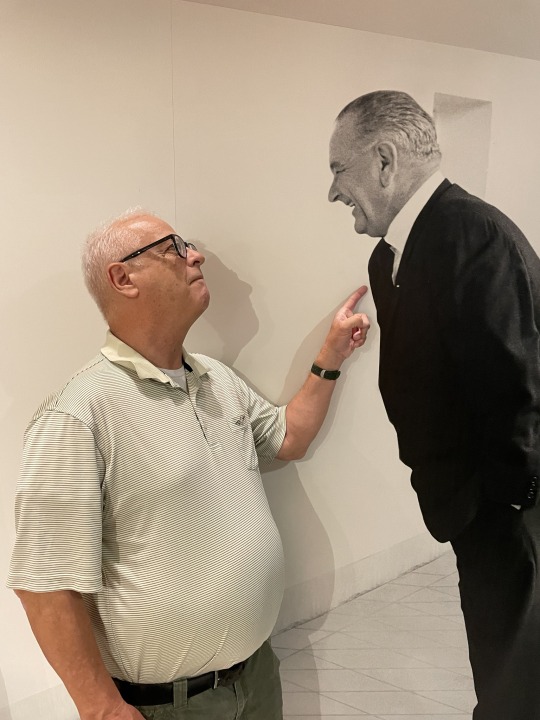
04/09/24 - Austin, TX - THE JOHNSON TREATMENT - Meet Ralph, an old friend from my high school days. He’s from Phoenix and is visiting with us to see yesterday’s total solar eclipse and a little bit of Austin as well. Our first stop today is the LBJ Presidential Library. Lyndon Johnson liked to intimidate people, when cajoling them to agree to his point of view, by invading their personal space and pointing his finger at them: they called it ‘The Johnson Treatment’. Here, Ralph is showing you how it’s done.
0 notes
Text
I've actually never seen this photo of LBJ!
The @richardnixonlibrary in Orange County is not just one of the best Presidential Libraries in the National Archives system (and has the unique feature of having Nixon's birthplace on site, just a few dozen feet from his gravesite), but they also have one of the best Tumblr sites for history content! You guys should follow them.

#OTD 1/22/1973 Former President Lyndon Baines Johnson died at the age of 64 following his third heart attack. In his statement on President Johnson’s death, President Nixon said, “No man had greater dreams for America than Lyndon Johnson. Even as we mourn his death, we are grateful for his life, which did so much to make those dreams into realities. And we know that as long as this Nation lives, so will his dreams and his accomplishments.” (Image: WHPO-1892-14A)
#@richardnixonlibrary#Richard Nixon Library#Nixon Library#Lyndon B. Johnson#LBJ#President Johnson#Death of Lyndon B. Johnson#Richard Nixon#President Nixon#Richard Nixon Presidential Library and Museum#Presidential Libraries#National Archives#National Archives and Records Administration#NARA
44 notes
·
View notes
Text
A GREAT article in Harper's Bazaar by the always-awesome Alexis Coe (who I'm not history friends with yet for unknown and unacceptable reasons -- someone needs to fix this) about the fascinating story of LBJ and his secretary, Gerri Whittington, who broke down barriers and, at times, literally integrated various institutions due to her important position as a trusted member of President Johnson's staff.
#History#Alexis Coe#Lyndon B. Johnson#LBJ#Lyndon Johnson#President Johnson#Civil Rights#Diversity#Geri Whittington#White House#White House Staff#LBJ Library#Harper's Bazaar#Presidents#Presidential History
54 notes
·
View notes
Note
sorry if this is an insane thing to send you but I thought your air horse one drawing would fit in perfectly in the scary lbj animatronic room at the lbj presidential library

i love that. everyone go tell your friends this is an unedited photo
110 notes
·
View notes
Text





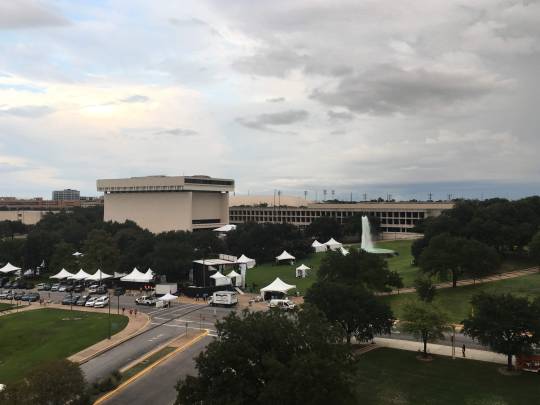



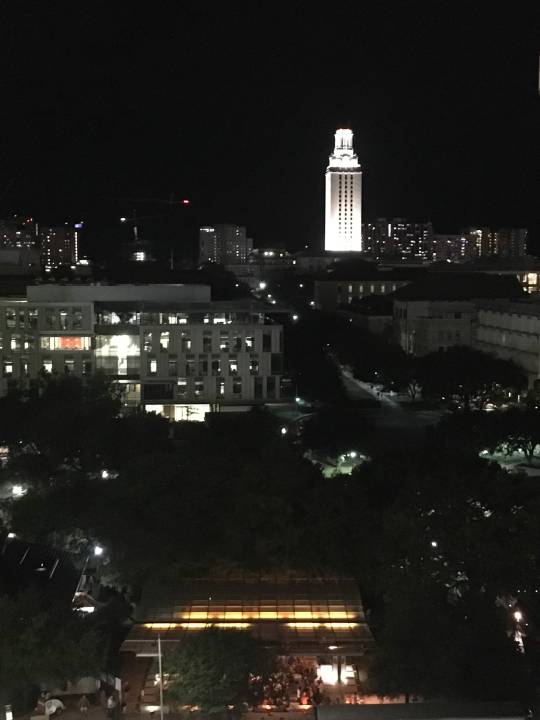


UT vs. Tulsa game at the Darrell K Royal–Texas Memorial Stadium. Hook 'Em Horns! 🤘🤘September 8, 2018.
Top 4 pictures are from the game. Rest are the view of campus from the stadium. Can see the LBJ Presidential Library, the Bass Concert Hall, and the UT Tower.
#Darrell K Royal Texas Memorial Stadium#UT Stadium#UT Longhorns#Longhorns#Hook 'Em Horns#LBJ Presidential Library#Bass Concert Hall#UT Tower#UT Main Building#University of Texas at Austin#UT Austin#University of Texas System#Austin#Texas
0 notes
Text
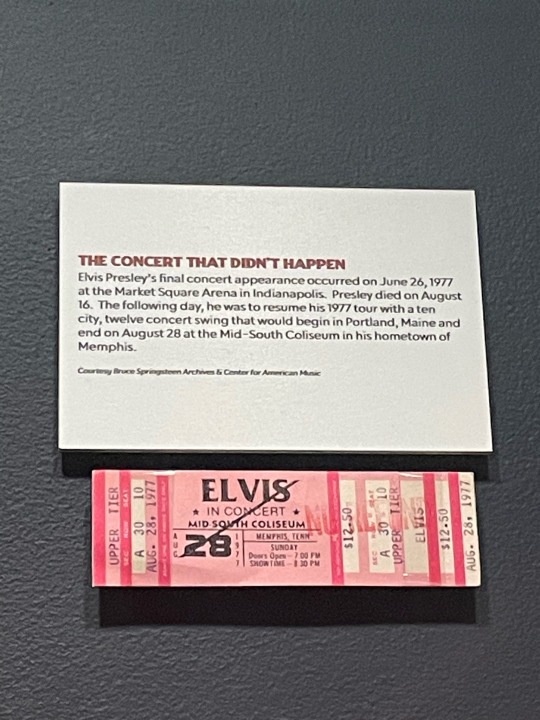
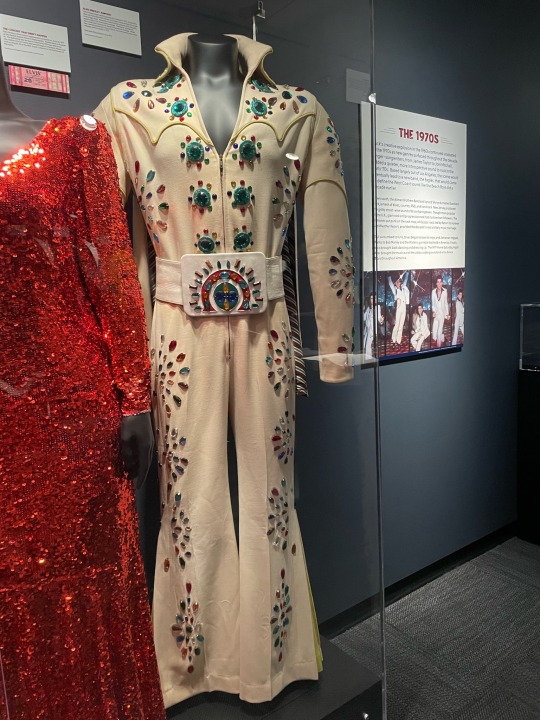
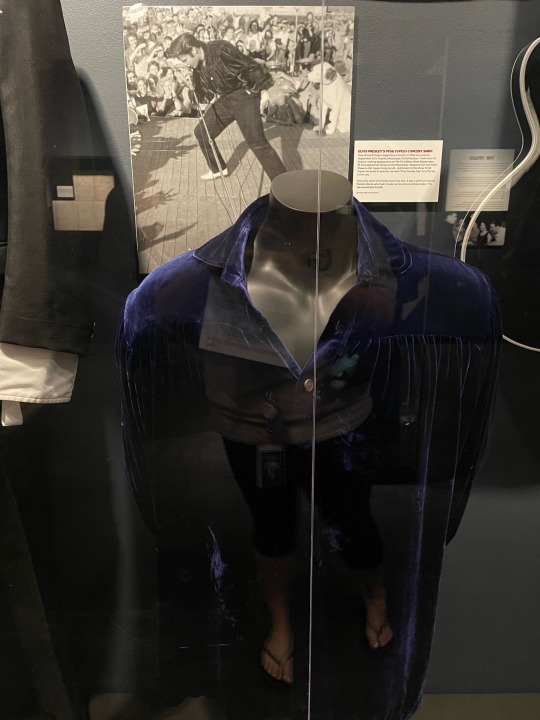
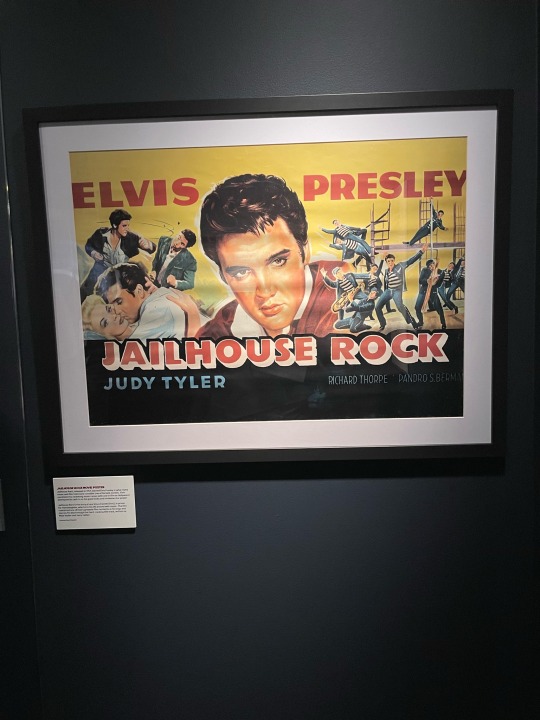
While at the LBJ library in Austin, Tx they had a Music through the decades display and it had our man Elvis Presley in it !!
@vintagepresley @precious-little-scoundrel
55 notes
·
View notes
Text
One phrase encapsulates the methodology of nonfiction master Robert Caro: Turn Every Page. The phrase is so associated with Caro that it’s the name of the recent documentary about him and of an exhibit of his archives at the New York Historical Society. To Caro it is imperative to put eyes on every line of every document relating to his subject, no matter how mind-numbing or inconvenient. He has learned that something that seems trivial can unlock a whole new understanding of an event, provide a path to an unknown source, or unravel a mystery of who was responsible for a crisis or an accomplishment. Over his career he has pored over literally millions of pages of documents: reports, transcripts, articles, legal briefs, letters (45 million in the LBJ Presidential Library alone!). Some seemed deadly dull, repetitive, or irrelevant. No matter—he’d plow through, paying full attention. Caro’s relentless page-turning has made his work iconic.
In the age of AI, however, there’s a new motto: There’s no need to turn pages at all! Not even the transcripts of your interviews. Oh, and you don’t have to pay attention at meetings, or even attend them. Nor do you need to read your mail or your colleagues’ memos. Just feed the raw material into a large language model and in an instant you’ll have a summary to scan. With OpenAI’s ChatGPT, Google’s Gemini, and Anthropic’s Claude as our wingmen, summary reading is what now qualifies as preparedness.
LLMs love to summarize, or at least that’s what their creators set them about doing. Google now “auto-summarizes” your documents so you can “quickly parse the information that matters and prioritize where to focus.” AI will even summarize unread conversations in Google Chat! With Microsoft Copilot, if you so much as hover your cursor over an Excel spreadsheet, PDF, Word doc, or PowerPoint presentation, you’ll get it boiled down. That’s right—even the condensed bullet points of a slide deck can be cut down to the … more essential stuff? Meta also now summarizes the comments on popular posts. Zoom summarizes meetings and churns out a cheat sheet in real time. Transcription services like Otter now put summaries front and center, and the transcription itself in another tab.
Why the orgy of summarizing? At a time when we’re only beginning to figure out how to get value from LLMs, summaries are one of the most straightforward and immediately useful features available. Of course, they can contain errors or miss important points. Noted. The more serious risk is that relying too much on summaries will make us dumber.
Summaries, after all, are sketchy maps and not the territory itself. I’m reminded of the Woody Allen joke where he zipped through War and Peace in 20 minutes and concluded, “It’s about Russia.” I’m not saying that AI summaries are that vague. In fact, the reason they’re dangerous is that they’re good enough. They allow you to fake it, to proceed with some understanding of the subject. Just not a deep one.
As an example, let’s take AI-generated summaries of voice recordings, like what Otter does. As a journalist, I know that you lose something when you don’t do your own transcriptions. It’s incredibly time-consuming. But in the process you really know what your subject is saying, and not saying. You almost always find something you missed. A very close reading of a transcript might allow you to recover some of that. Having everything summarized, though, tempts you to look at only the passages of immediate interest—at the expense of unearthing treasures buried in the text.
Successful leaders have known all along the danger of such shortcuts. That’s why Jeff Bezos, when he was CEO of Amazon, banned PowerPoint from his meetings. He famously demanded that his underlings produce a meticulous memo that came to be known as a “6-pager.” Writing the 6-pager forced managers to think hard about what they were proposing, with every word critical to executing, or dooming, their pitch. The first part of a Bezos meeting is conducted in silence as everyone turns all 6 pages of the document. No summarizing allowed!
To be fair, I can entertain a counterargument to my discomfort with summaries. With no effort whatsoever, an LLM does read every page. So if you want to go beyond the summary, and you give it the proper prompts, an LLM can quickly locate the most obscure facts. Maybe one day these models will be sufficiently skilled to actually identify and surface those gems, customized to what you’re looking for. If that happens, though, we’d be even more reliant on them, and our own abilities might atrophy.
Long-term, summary mania might lead to an erosion of writing itself. If you know that no one will be reading the actual text of your emails, your documents, or your reports, why bother to take the time to dig up details that make compelling reading, or craft the prose to show your wit? You may as well outsource your writing to AI, which doesn’t mind at all if you ask it to churn out 100-page reports. No one will complain, because they’ll be using their own AI to condense the report to a bunch of bullet points. If all that happens, the collective work product of a civilization will have the quality of a third-generation Xerox.
As for Robert Caro, he’s years past his deadline on the fifth volume of his epic LBJ saga. If LLMs had been around when he began telling the president’s story almost 50 years ago—and he had actually used them and not turned so many pages—the whole cycle probably would have been long completed. But not nearly as great.
23 notes
·
View notes
Text
Shirley Franklin

Shirley Franklin was born in 1945 in Philadelphia, Pennsylvania. In 2001, Franklin became the first woman elected mayor of Atlanta. She served from 2002 until 2010. During her tenure, Franklin implemented more than $5 billion in improvements to airport and water infrastructure, and launched the Atlanta Beltline. She also instituted the strictest code of ethics for public employees anywhere in the state. In 2005, Franklin was named one of the five best big city mayors in the US by TIME Magazine, and received the John F Kennedy Profile in Courage Award. After leaving office, she joined Delta's board of directors.
Image source: LBJ Library
10 notes
·
View notes